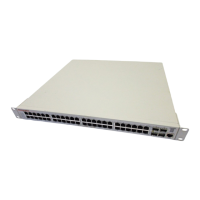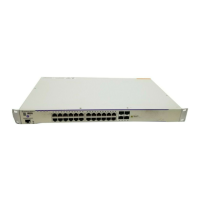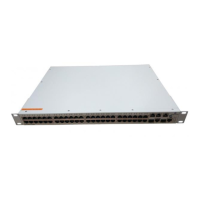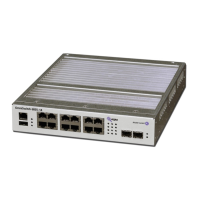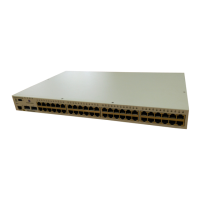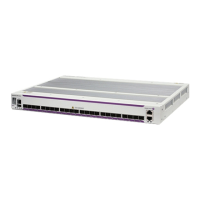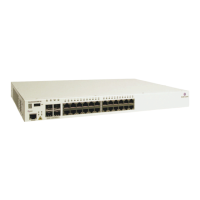Configuring IP Multicast Switching Interaction With Other Features
OmniSwitch AOS Release 8 Network Configuration Guide December 2017 page 25-7
Interaction With Other Features
This section contains important information about IP Multicast Switching (IPMS) interaction with other
OmniSwitch features. Refer to the specific chapter for each feature to get more detailed information about
how to configure and use the feature.
IPMS for Shortest Path Bridging
In a networking environment where IP multicast traffic is used, destination hosts signal their intent to
receive a specific IP multicast stream by sending one of the following types of requests to a nearby switch:
• An Internet Group Management Protocol (IGMP) request to receive an IPv4 multicast stream.
• An Multicast Listener Discovery (MLD) protocol request to receive an IPv6 multicast stream.
The switch then learns on which ports multicast group subscribers are attached and can intelligently
deliver traffic only to the respective ports. This process is referred to as IGMP or MLD snooping. The
OmniSwitch implementation of IGMP and MLD snooping is called IP Multicast Switching (IPMS).
IPMS for Shortest Path Bridging (SPB) services is essentially the same. An SPB backbone edge bridge
(BEB) will apply the logic of IPMS on a per-service basis to limit the traffic going out of each Service
Access Point (SAP) port, as well as limit traffic going out across each backbone port. The SPB bridge will
monitor the IGMP or MLD queries and requests from SAPs and Service Distribution Point (SDP) ports
(also referred to as network virtual ports) to build the stream membership association logic and timing in
the same manner as is done on a standard IGMP or MLD snooping bridge.
When traffic arrives on a SAP port, the switch will examine the packet to see if there are any known
receivers. If there are any such receivers, then only ports (including network virtual ports) will have a
copy of that frame sent on them. When traffic arrives from the core on a network virtual port, the same
logic is applied so that a copy of the frame is only sent out on a port where a listener has requested
membership to the stream. However, traffic from the core is never sent back into the core (split horizon
protection).
The implementation of IPMS for SPB helps to cut down on the unnecessary forwarding of IP multicast
traffic that can occur in an SPB network. This is particularly useful in networks that carry large amounts
of multicast traffic, such as traffic from security cameras and on demand video.
Refer to the “Configuring Shortest Path Bridging” chapter in the OmniSwitch AOS Release 8 Data Center
Switching Guide for more information about configuring SPB services.
VLAN and Service Domains
IPMS functionality is supported within the OmniSwitch VLAN domain and the OmniSwitch Shortest Path
Bridging (SPB) service domain.
• The VLAN domain is identified by a VLAN ID. In the VLAN domain, each VLAN is accessed
through a physical port. Each physical port can have more than one VLAN attached.
• The SPB service domain is identified by an SPB service instance identifier (I-SID), which is associated
with a Service Manger service ID to represent a virtual forwarding instance (VFI). Each VFI is
accessed through a virtual port, referred to as a Service Access Point (SAP).
The following IPMS functionality is not supported in the SPB service domain:

